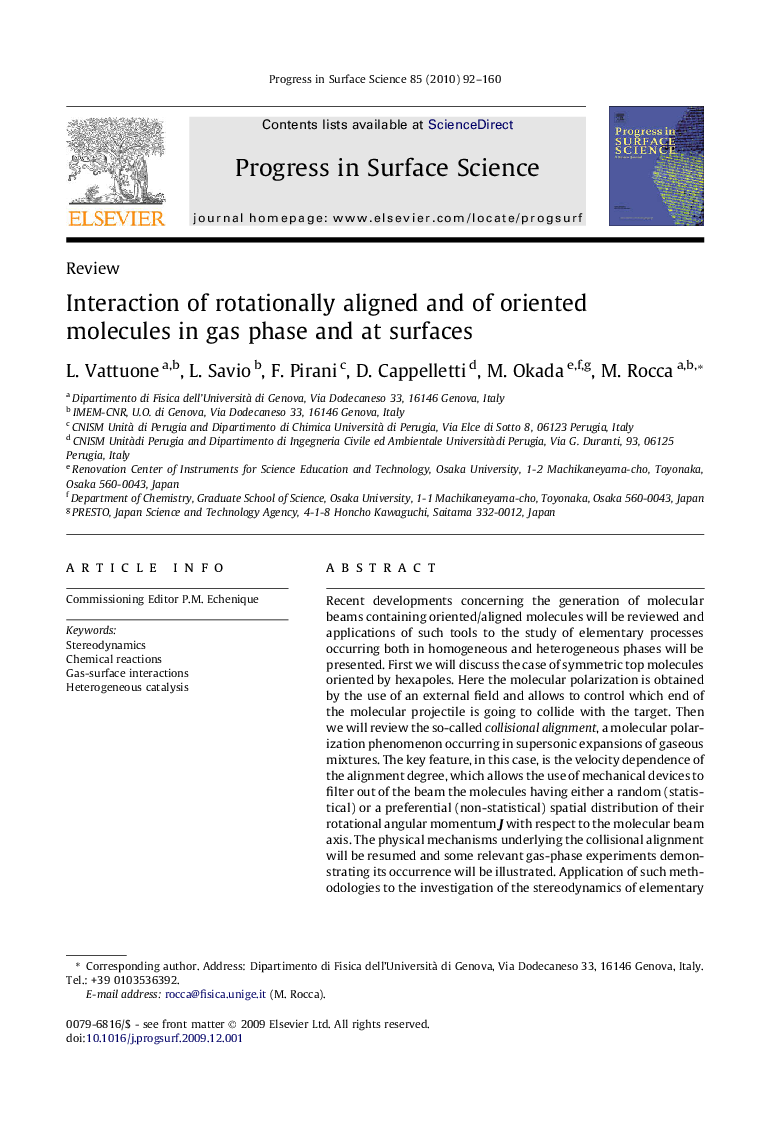| Article ID | Journal | Published Year | Pages | File Type |
|---|---|---|---|---|
| 5420104 | Progress in Surface Science | 2010 | 69 Pages |
Abstract
Recent developments concerning the generation of molecular beams containing oriented/aligned molecules will be reviewed and applications of such tools to the study of elementary processes occurring both in homogeneous and heterogeneous phases will be presented. First we will discuss the case of symmetric top molecules oriented by hexapoles. Here the molecular polarization is obtained by the use of an external field and allows to control which end of the molecular projectile is going to collide with the target. Then we will review the so-called collisional alignment, a molecular polarization phenomenon occurring in supersonic expansions of gaseous mixtures. The key feature, in this case, is the velocity dependence of the alignment degree, which allows the use of mechanical devices to filter out of the beam the molecules having either a random (statistical) or a preferential (non-statistical) spatial distribution of their rotational angular momentum J with respect to the molecular beam axis. The physical mechanisms underlying the collisional alignment will be resumed and some relevant gas-phase experiments demonstrating its occurrence will be illustrated. Application of such methodologies to the investigation of the stereodynamics of elementary processes occurring in gas-surface interaction will be presented and discussed for both weakly and strongly interacting systems.
Related Topics
Physical Sciences and Engineering
Chemistry
Physical and Theoretical Chemistry
Authors
L. Vattuone, L. Savio, F. Pirani, D. Cappelletti, M. Okada, M. Rocca,
